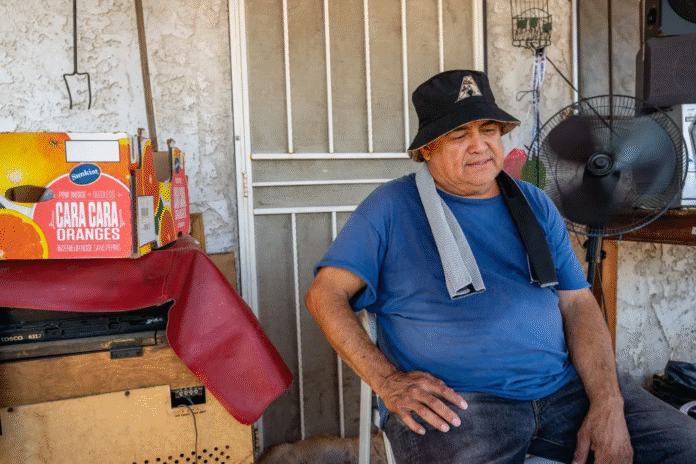
With summer quickly approaching, the Low Income Home Energy Assistance Program (LIHEAP), a crucial lifeline for millions of low-income Americans, finds itself in jeopardy. The program, which has historically helped people pay their energy bills, is now facing significant hurdles due to severe staff cuts at the U.S. Department of Health and Human Services (HHS). As a result, $380 million in vital funding meant to assist vulnerable populations this summer is stuck in federal limbo, with no clear path for distribution.
The effects of these cuts are especially concerning given the rise in extreme heat across the U.S. Just last year, the Pacific Northwest experienced a record-breaking heatwave, with Portland, Oregon, and Quillayute, Washington, hitting unprecedented temperatures. In Washington state alone, the deadly heatwave led to 125 deaths from heat-related illnesses. This disaster underscored the disproportionate impact heat waves have on low-income and unhoused individuals who lack access to air conditioning or even adequate housing.
A Lifeline for Millions
For over four decades, LIHEAP has been a crucial program in providing financial assistance to low-income families, helping them stay safe and comfortable during extreme weather conditions. Originally created to address winter heating needs, the program was expanded in 2021 to include cooling assistance in the face of increasing summer heatwaves. This expansion became a lifeline for many, especially in areas like Arizona, Texas, and Oregon, where scorching temperatures are the norm during summer months.
In 2022, Congress allocated $4.1 billion to LIHEAP, ensuring that around 6 million households could access the help they needed. This funding allowed states and tribes to provide essential services, including utility bill payments and energy-efficient upgrades, which can be lifesaving for individuals who are especially vulnerable during both the winter and summer months.
However, this year, the future of LIHEAP is uncertain. Recent staff layoffs at HHS have left the program unable to operate at full capacity. HHS, which is responsible for distributing LIHEAP funds, laid off 10,000 employees earlier this month, including those specifically tasked with managing and disbursing the energy assistance program. As a result, $378 million in funds that were supposed to be distributed this year are now stalled.
The Growing Need for Cooling Assistance
Historically, the demand for LIHEAP assistance has always exceeded the funds available. Only about one in five eligible households receives assistance, and many states run out of funding by mid-summer, leaving many without help when they need it most.
The need for cooling assistance is becoming more urgent as the climate crisis accelerates. This summer, cities like Phoenix are already experiencing temperatures that are well above 100°F, and forecasts predict that other parts of the country will soon follow suit. As temperatures rise, the need for LIHEAP funding to provide cooling assistance has never been greater. Yet, the very staff who were tasked with ensuring the program could operate efficiently are no longer in place to help.
“We’re seeing the warm-weather states really coming up short with the funding necessary to assist people in the summer with extreme heat,” said one former HHS employee who worked on LIHEAP before being laid off. The loss of the staff who managed the program is “absolutely devastating,” they said, because these employees were vital in helping states and tribes navigate the program’s complexities and understand how best to allocate resources during increasingly unpredictable weather patterns.
The Impact of Staff Cuts
In typical years, after Congress appropriates funds, HHS distributes the money in the fall, ensuring it reaches communities in time for the colder months. The funds are often used strategically, with states saving a portion of the money for summer cooling assistance. But without the staff to manage this complex process, states are now facing a backlog that could prevent timely help from reaching those who need it.
According to Katrina Metzler, executive director of the National Energy and Utility Affordability Coalition, if the program were to disappear, the consequences would be dire. “If LIHEAP were to disappear, people would die in their homes. That’s the most critical issue. It saves people,” Metzler said. The program’s ability to keep homes safe during extreme heat is a matter of life and death for many low-income families, elderly individuals, and people with chronic health conditions.
What Needs to Happen Next?
While the cuts to HHS staff have created a serious disruption in the LIHEAP program, there are still avenues through which the program could continue to operate. Metzler suggests that HHS could reinstate the laid-off employees to restore the necessary expertise or move the program to another department within the agency. Additionally, the government could consider contracting out the responsibilities of the program to ensure that funds are distributed in a timely manner.
But the need for immediate action is clear. “Replacing the federal Low Income Home Energy Assistance Program is a nearly impossible task,” Metzler noted. States cannot simply raise enough money through other means to replace LIHEAP’s essential role. “You can’t have enough bake sales to replace it,” she quipped.
For now, the $380 million in funding that is currently trapped in federal coffers is just the beginning of a much larger issue. As the heatwaves continue to intensify across the country, millions of Americans are counting on this lifeline to survive. If Congress and HHS do not act swiftly, the impacts could be disastrous for the most vulnerable members of society.
Conclusion
As summer approaches, the threat of rising temperatures is compounded by the uncertainty surrounding critical programs like LIHEAP. The need for cooling assistance has never been more pressing, and the cuts to HHS staff could jeopardize the health and safety of countless low-income families. Without immediate intervention, the U.S. risks abandoning its most vulnerable citizens at a time when they need help the most. The question now is whether the government will act in time to ensure that the funding reaches those who need it before the summer heat becomes a deadly force.
4o


